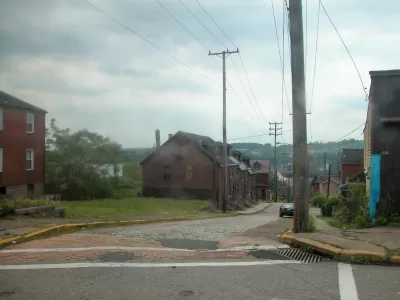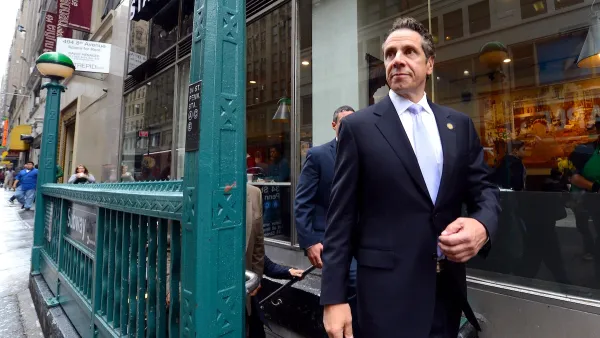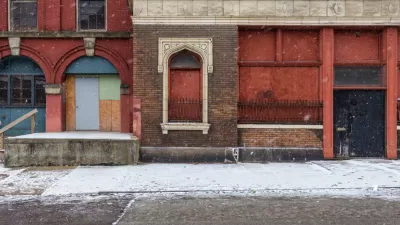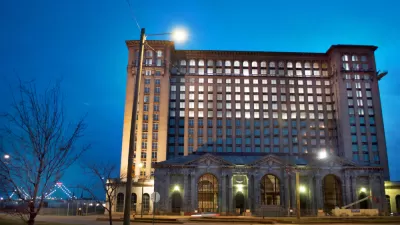The usual litany of Rust Belt woes hit North Braddock, Pennsylvania particularly hard. The Pittsburgh suburb has shed two-thirds of its population and is burdened with 350 abandoned properties.

Next to Detroit's legendary depopulation, the loss of twelve thousand residents seems minuscule. But for North Braddock it means a population down two-thirds and a dangerous accumulation of abandoned homes. Nafari Vanaski spoke to residents and officials about their long struggle with the problem.
Dave Andrews, a code enforcement officer, faces an uphill battle finding the owners of ramshackle rental properties, let alone compelling them to repair. "He's in court about twice a month trying to get people to fix their homes or pay the fine. Usually, those trips are fruitless, and he hears about it from frustrated residents. 'They think I'm not doing my job because nothing gets done.'"
Desperate for funds to properly dispose of abandoned structures, North Braddock considered welcoming the natural gas industry. Vanaski writes, "Officials were ready to consider the idea, but many residents turned up at the next council meeting to reject it, for reasons ranging from opposition to fracking to the possibility they might lose the view from their house as the work proceeded."
According to borough manager Doug Marguriet, "It should be national policy … to do something about all these old industrial towns by eliminating blight. Then you give the markets a chance to revitalize. But if you don't get rid of the blight, nothing's going to happen. You can't build new houses in the midst of blight."
FULL STORY: So Many Houses, So Little Money: How to Manage the Abandoned Properties of North Braddock, PA?

Planetizen Federal Action Tracker
A weekly monitor of how Trump’s orders and actions are impacting planners and planning in America.

Maui's Vacation Rental Debate Turns Ugly
Verbal attacks, misinformation campaigns and fistfights plague a high-stakes debate to convert thousands of vacation rentals into long-term housing.

Cuomo Is the Candidate of Both NIMBYs and Developers. What Gives?
In the New York City mayoral race, odd bedfellows align to preserve the housing status quo.

The Subversive Car-Free Guide to Trump's Great American Road Trip
Car-free ways to access Chicagoland’s best tourist attractions.

San Antonio and Austin are Fusing Into one Massive Megaregion
The region spanning the two central Texas cities is growing fast, posing challenges for local infrastructure and water supplies.

Charlottesville Temporarily Has No Zoning Code
A judge ordered the Virginia city to throw out its newly revised zoning code, leaving permitting for new development in legal limbo.
Urban Design for Planners 1: Software Tools
This six-course series explores essential urban design concepts using open source software and equips planners with the tools they need to participate fully in the urban design process.
Planning for Universal Design
Learn the tools for implementing Universal Design in planning regulations.
Heyer Gruel & Associates PA
JM Goldson LLC
Custer County Colorado
City of Camden Redevelopment Agency
City of Astoria
Transportation Research & Education Center (TREC) at Portland State University
Jefferson Parish Government
Camden Redevelopment Agency
City of Claremont




























